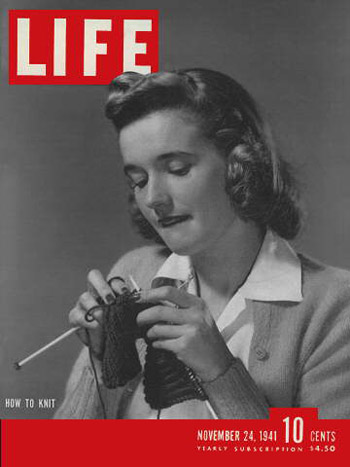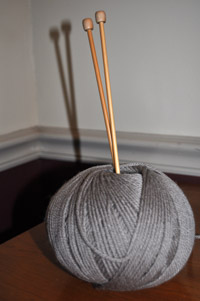Posted by · Leave a Comment
 It’s November, 1941.
It’s November, 1941.
The newest issue of Life magazine is on the newsstands. On the cover is a woman knitting; the caption reads “How to Knit.” Now, this wasn’t your ordinary housewife-tutorial…something you’d pick up to do in your spare time…maybe something to try. In this issue, there was a simple pattern for a vest. There were simple instructions. There was an agenda. The objective? Knit a million sweaters for soldiers by Christmas. Christmas, 1941. No kidding.
A movement was born. Sweaters, socks, mufflers, mittens—all were being knitted for soldiers abroad. And, until Pearl Harbor, many of these American-made warmers were bound for Britain in the “Bundles for Britain” campaign to assist displaced Londoners. Other committees soon formed to send the same handmade knitwear to other countries: Finland, Poland, Belgium.
“Knit for Victory” it was called (once America was fully engaged, knitting for American soldiers took precedence). Many knitters who’d picked up their needles to knit for World War I soldiers, immediately did so during WWII and the American Red Cross played the part of organizing this massive movement. If you worked in a factory, like many women did, it was a way to use your down time. If you had a loved one overseas, like many women did, it was a way to connect…to contribute…to actively participate on the Home Front. Besides, they say, the hand-knit socks lasted longer than the machined ones and knitting kept your mind occupied!
 So, you see, knitting, most definitely, has a special place in our history. Whether you knit for fun or for “a purpose,” it’s a skill well worth pursuing.
So, you see, knitting, most definitely, has a special place in our history. Whether you knit for fun or for “a purpose,” it’s a skill well worth pursuing.



Comments